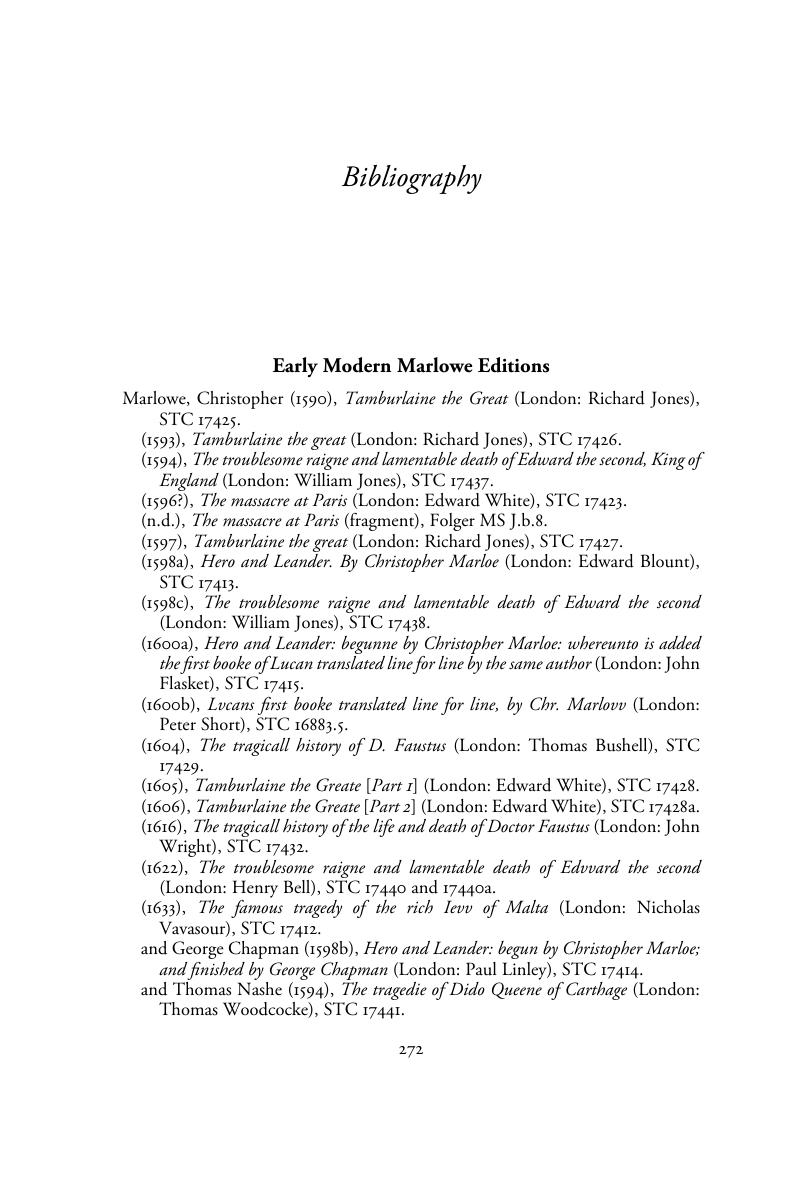Book contents
- Christopher Marlowe, Theatrical Commerce, and the Book Trade
- Frontispiece
- Christopher Marlowe, Theatrical Commerce, and the Book Trade
- Copyright page
- Dedication
- Contents
- Figures
- Notes on Contributors
- To the Reader
- Acknowledgements
- Notes on the Text
- Abbreviations
- Introduction
- Part I Marlowe at Work
- Part II Transmitting Marlowe
- Part III Marlowe Received
- Bibliography
- Index
- References
Bibliography
Published online by Cambridge University Press: 28 September 2018
- Christopher Marlowe, Theatrical Commerce, and the Book Trade
- Frontispiece
- Christopher Marlowe, Theatrical Commerce, and the Book Trade
- Copyright page
- Dedication
- Contents
- Figures
- Notes on Contributors
- To the Reader
- Acknowledgements
- Notes on the Text
- Abbreviations
- Introduction
- Part I Marlowe at Work
- Part II Transmitting Marlowe
- Part III Marlowe Received
- Bibliography
- Index
- References
Summary

- Type
- Chapter
- Information
- Christopher Marlowe, Theatrical Commerce, and the Book Trade , pp. 272 - 303Publisher: Cambridge University PressPrint publication year: 2018



